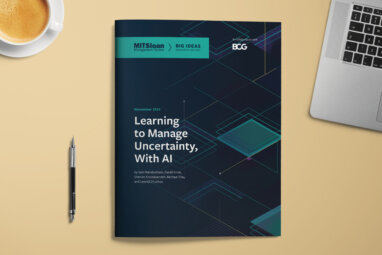Unleash the Unexpected for Radical Innovation
Breakthrough inventions arise unpredictably. Better exploration can identify surprising opportunities.

Patrick George
The accelerometer chip — a small but radical innovation — is ubiquitous in today’s digital devices. These speed and orientation sensors tell our phones whether they’re being held in portrait or landscape mode, deploy airbags in our cars, and track our forehands when we play virtual tennis. They also help sense when the earth starts to shift before earthquakes or volcanic eruptions. But while it is easy to recognize the significance of this innovation retrospectively, its true impact didn’t become apparent until many of today’s most valued applications were developed. This gradual unveiling of an innovation’s potential over time is a surprisingly common pattern — so common, in fact, that companies need to craft their innovation management systems with this phenomenon in mind.
Here’s how the accelerometer made its mark. In the early 1980s, an R&D scientist at Analog Devices learned of a new invention in the world of integrated circuits that incorporated mechanical devices within their designs. Today, we know that innovation as microelectromechanical system, or MEMS, devices. The scientist was intrigued enough to invite the inventor, a professor at a nearby university, to give a talk to Analog’s R&D group. He then began to experiment with design and generated ideas with colleagues on packaging such a device on a circuit board, the benefits the technology could provide, and how such systems could be manufactured at scale. He expected that there would be uses in the automotive industry, a sector attractive to Analog because automobiles were becoming increasingly dependent on smart electronic systems. Eventually, the team demonstrated the potential of these new devices to sense changes in speed and showed how they could be produced economically, and thus the accelerometer chip was born.
Over the next 10 years, the company searched for applications in the automotive market.
References (9)
1. P.M. Norling and R.J. Statz, “How Discontinuous Innovation Really Happens,” Research Technology Management 41, no. 3 (May-June 1998): 41-44.
2. M.P. Rice, G.C. O’Connor, and R. Pierantozzi, “Implementing a Learning Plan to Counter Project Uncertainty,” MIT Sloan Management Review 49, no. 2 (winter 2008): 54-62; and R. McGrath, “Seeing Around Corners: How to Spot Inflection Points in Business Before They Happen” (Boston: Houghton Mifflin Harcourt, 2019).





Comment (1)
CHANDER NAGPAL